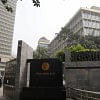Bank failures and reforms: The case for an independent deposit insurance system

Bank failure is a common phenomenon across the globe, often driven by poor management, fraud, corruption, excessive risk-taking, and inadequate capitalisation. Economic downturns, sudden regulatory changes and natural disasters can also play a significant role in bank failure. In recent years, we saw examples like the collapses of Silicon Valley Bank and Signature Bank in the US and Credit Suisse in Europe, and the near collapse of Yes Bank in India, all for a variety of these reasons.
In contrast, Bangladesh has not experienced many bank failures, though issues like moral hazard, distorted incentives, reduced market discipline, and inefficient resource allocation are prevalent. These factors often lead banks to be careless in lending practices, while expecting government bailout with taxpayers' money. A major cause of bank failure is the liquidity crisis. To mitigate the severity of the recent liquidity crunch in the country's banking system, the central bank has provided assistance through instruments like the repo facility, standing lending facility (SLF), and special liquidity support (SLS).
During this period of high inflation, when monetary tightening is typically needed to reduce the money supply, the Bangladesh Bank injected liquidity to avoid crises at certain banks. This approach runs counter to international best practices and is questionable during a time of soaring inflation. Essentially, the central bank is preventing bank failures and preserving public confidence in the system by ensuring adequate liquidity to meet depositor withdrawals.
A common global practice is the establishment of a deposit insurance system to offer stability to the financial system as an adjunct to the central bank's lender of last resort function and to work for establishing a safety net for depositors. However, this system does not always guarantee full protection from losses.
Bangladesh has had such a system in place since 1984, governed by the Bank Deposit Insurance Act, 2000 and managed by the central bank. The Deposit Insurance Department under the Bangladesh Bank collects premiums from all scheduled banks, including foreign branches, and deposits these funds into the Deposit Insurance Trust Fund (DITF). The DITF's resources are typically invested in government securities, BB bills and repo, as approved by the trustee board. Notably, members of this trustee board are the same as the governing body of Bangladesh Bank.
In many countries, deposit insurance is managed by a separate body rather than the central bank. Major economies such as the US, UK and Japan have independent entities handling deposit insurance. In some developing countries, deposit insurance bodies operate as subsidiaries of the central bank but remain distinct from it. In Bangladesh, however, the central bank directly manages the system.
In the US, the Federal Deposit Insurance Corporation (FDIC) insures depositors up to $250,000 per depositor, per insured bank, for each account ownership category. This is significantly higher than the $80,000 per capita GNI in the US. The FDIC also plays a key role in facilitating the purchase and assumption of failed banks, ensuring minimal disruption for the depositors. If no buyer is found, the FDIC may liquidate the bank's assets. Its long history of effectively managing bank failures includes notable events like the Great Depression, the Savings and Loan Crisis of the 1980s, the 2008 Financial Crisis, and the recent failures of Silicon Valley Bank and Signature Bank.
Similarly, Japan's Deposit Insurance Corporation covers transactional accounts in full, while other deposits are insured up to 10 million yen per bank, which is close to the double of 5.7 million yen per capita GNI. In India, the Deposit Insurance and Credit Guarantee Corporation (DICGC), a subsidiary of the Reserve Bank of India, insures all types of bank deposits up to 500,000 rupees per depositor, per bank—while the per capita GNI is around 210,000 rupees.
International examples suggest that Bangladesh's deposit insurance limit should be increased, and at the same time, the institutional system of deposit insurance should be reorganised. Researchers often recommend that the insured amount should be equivalent to one to two times the per capita GDP. However, the current insured amount in the country is significantly lower than the provisional per capita income of Tk 306,144.
A recent statement by the Bangladesh Bank governor indicates that a depositor is eligible to receive a maximum of Tk 200,000 per account in the event of a bank failure. However, as of September 9, 2024, the Bangladesh Bank website states that a depositor is eligible to receive only Tk 100,000 per person, irregardless of the number of accounts or banks that they have. This discrepancy between some statements and the information stated on the central bank website must be clarified to build depositor confidence. Even if the insured amount is set at Tk 200,000, it is insufficient to meet the expectations of many depositors, particularly in the context of rising incomes and economic uncertainty.
In recent years, Bangladesh has witnessed significant growth in Islamic banking. It is essential to implement mechanisms that protect the depositors of Islamic banks, ensuring that these institutions are also covered under the deposit insurance system. Additionally, inclusion of non-bank financial institutions (NBFIs) in this system can be explored for the overall financial market stability.
To enhance financial stability and boost depositor confidence, the authorities should consider establishing an independent deposit insurance corporation with a separate board, distinct from the governing body of the Bangladesh Bank. Such an independent entity could play a crucial role in ensuring a stable financial system by closely monitoring the banks' liquidity positions. Moreover, it could manage the accumulated funds more efficiently and potentially increase the insured amount for depositors. This separation of deposit insurance functions would not only reduce the burden on the Bangladesh Bank, but also contribute to the overall stability of the financial sector.
Dr Md Rashedur Rahman Sardar is a member of Bangladesh Civil Service (BCS) and is currently working at the Ministry of Finance.
Views expressed in this article are the author's own.
Follow The Daily Star Opinion on Facebook for the latest opinions, commentaries and analyses by experts and professionals. To contribute your article or letter to The Daily Star Opinion, see our guidelines for submission.

 For all latest news, follow The Daily Star's Google News channel.
For all latest news, follow The Daily Star's Google News channel. 













Comments